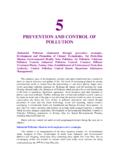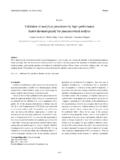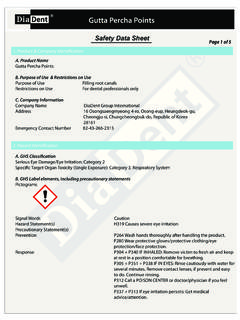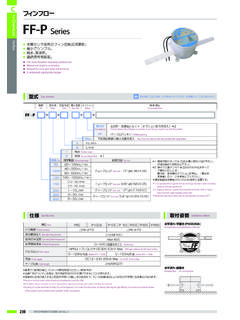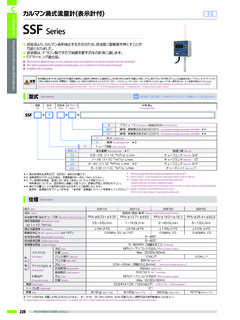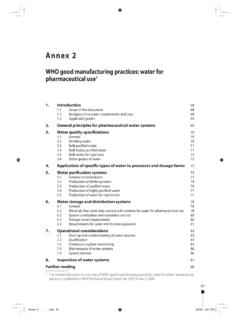Transcription of Frequently Asked Questions on the Coastal …
1 1 Frequently Asked Questions on the Coastal Regulation Zone Notifi cation, 2011 and Island Protection Zone Notifi cation, 2011I. General1. Why is there a need for a Coastal Regulation Zone Notifi cation, 2011? The Ministry of Environment and Forests had issued the Coastal Regulation Zone (CRZ) Notifi cation on under the Environment (Protection) Act, 1986, with the aim to provide comprehensive measures for the protection and conservation of our Coastal environment. However, over the last two decades the following issues emerged while implementing the 1991 Notifi cation:The 1991 Notifi cation stipulated uniform regulations for the entire Indian coastline which includes 5500 Km coastline of the mainland and 2000 Km of coastline of the islands of Andaman & Nicobar and Lakshadweep.
2 It, therefore, failed to take into account that the Indian coastline is highly diverse in terms of biodiversity, hydrodynamic conditions, demographic patterns, natural resources, geomorphological and geological features. In the 1991 Notifi cation, no clear procedure for obtaining CRZ clearance was laid down and no time lines stipulated. Furthermore, there was no format given for the submission of clearance applications. It may be noted that the 1991 Notifi cation, also did not provide a post clearance monitoring mechanism or a clear cut enforcement mechanism to check 1991 Notifi cation sought to regulate all developmental activities in the inter-tidal area and within 500 metres on the landward side. No concrete steps were indicated in the 1991 Notifi cation with regard to the pollution emanating from land based restrictive nature of the 1991 Notifi cation caused hardships to the persons/ communities living in certain ecologically sensitive Coastal stretches.
3 These included slum dwellers and other persons living in dilapidated and unsafe 2buildings in Mumbai, communities living in islands in the backwaters of Kerala, local communities living along the coast of Goa and other traditional Coastal 1991 Notifi cation has been amended almost 25 times in consideration of requests made by various State Governments, Central Ministries, NGOs etc. In addition, there are also several offi ce orders issued by Ministry of Environment and Forests clarifying certain provisions. The frequent changes to the 1991 Notifi cation have been consolidated in the 2011 Notifi 2011 Notifi cation takes into account and address all the above issues in a comprehensive manner, relying on the recommendations made in the Final Frontier Report by the Committee chaired by Dr.
4 Swaminathan on Coastal Regulation and the fi ndings of the various consultations held in various Coastal States and Union territories. The Minister of State (I/C) personally presided over the consultations in Goa, Chennai, Puri, Kochi and What are the objectives of the Coastal Regulation Zone Notifi cation, 2011?The main objectives of the Coastal Regulation Zone Notifi cation, 2011 are:To ensure livelihood security to the fi shing communities and other local communities living in the Coastal areas;To conserve and protect Coastal stretches and; To promote development in a sustainable manner based on scientifi c principles, taking into account the dangers of natural hazards in the Coastal areas and sea level rise due to global warming.
5 3II. Identifi cation and Classifi cation of CRZ Areas under the 2011 Notifi cation1. How have the Coastal zones been classifi ed under the 2011 Notifi cation?In the 1991 Notifi cation the CRZ area was classifi ed as CRZ-I (ecological sensitive), CRZ-II (built-up area), CRZ-III (Rural area) and CRZ-IV (water area). In the 2011 Notifi cation the above classifi cation is retained. The only change is the inclusion of CRZ-IV, which includes the water areas upto the territorial waters and the tidal-infl uenced water bodies. For the very fi rst time, a separate draft Island Protection Zone Notifi cation has been issued for protection of the islands of Andaman & Nicobar and Lakshadweep under Environment (Protection) Act, 1986. 2. What are the Coastal areas that qualify as falling within the CRZ-I category?
6 The CRZ Notifi cation, 2011 clearly lists out the areas that fall within the category of CRZ-I. It includes:-(i) Ecologically sensitive areas and the geomorphological features that play a primary role in maintaining the integrity of the coast. Mangroves, in case mangrove area is more than 1000 square metres, a buffer area of 50 metres shall be provided;Corals and coral reefs and associated biodiversity; Sand Dunes; Mudfl ats which are biologically active; National parks, marine parks, sanctuaries, reserve forests, wildlife habitats and other protected areas under the provisions of Wild Life (Protection) Act, 1972 (53 of 1972), the Forest (Conservation) Act, 1980 (69 of 1980) or Environment (Protection) Act, 1986 (29 of 1986); including Biosphere Reserves encompassing; ~ Salt Marshes; ~ Turtle nesting grounds; ~ Horse shoe crabs habitats;4 ~ Sea grass beds; ~ Nesting grounds of birds.
7 ~ Areas or structures of archaeological importance and heritage sites;(ii) The area between Low Tide Line and High Tide What are the activities permissible in CRZ-I?The activities permitted in CRZ-I under the 2011 Notifi cation are the activities that were permissible under the 1991 Notifi cation as amended from time to time. These relate to the following:- (i) No new construction shall be permitted in CRZ-I except;Projects relating to the Department of Atomic Energy; Pipelines, conveying systems including transmission lines; Facilities that are essential for activities permissible under CRZ-I; Installation of weather radar for monitoring of cyclones movement and prediction by the Indian Meteorological Department;Construction of trans-harbour sea link and roads on stilts or pillars without affecting the tidal fl ow of water, between LTL and of green fi eld airport already permitted at only Navi Mumbai;(ii) Between Low Tide Line and High Tide Line in areas which are not ecologically sensitive, the following may be permitted;Exploration and extraction of natural gas.
8 Construction of dispensaries, schools, public rain shelter, community toilets, bridges, roads, jetties, water supply, drainage, sewerage which are required to meet the needs of traditional inhabitants living within the biosphere reserves after obtaining approval from concerned harvesting by solar evaporation of seawater; Desalination plants; Storage of non-hazardous cargo such as edible oil, fertilizers and food grain within notifi ed ports;5 Construction of trans-harbour sea links, roads on stilts or pillars without affecting the tidal fl ow of What are the Coastal areas that qualify as falling within the CRZ-II category?The Notifi cation defi nes CRZ-II as the areas which are developed upto or close to the shoreline and falling within municipal What are the activities permissible in CRZ-II areas?
9 Buildings are permissible on the landward side of the existing road, authorized structure or hazardous line where there are no authorised structures. Other activities such as desalination plants and storage of non-hazardous cargo are also permissible. The Floor Space Index and Floor Area Ratio for construction projects shall be as on except for those specifi ed in the CRZ Notifi cation, 2011 which is mainly for slum redevelopment and redevelopment of dilapidated What are the Coastal areas that qualify as falling within the CRZ-III category? What are the activities permitted in these areas?CRZ-III areas are those areas that are relatively undisturbed and do not fall under either in Category I or II and also include rural and urban areas that are not substantially permissible activities for CRZ-III as listed in the CRZ Notifi cation, 1991 are retained in the Notifi cation.
10 Between 0-200 metres from HTL is a No Development Zone where no construction shall be permitted. Only certain activities relating to agriculture, horticulture, gardens, pasture, parks, play fi eld, forestry, projects of Department of Atomic Energy, mining of rare minerals, salt manufacture from seawater, facilities for receipt, storage, regasifi cation of petroleum products and liquefi ed natural gas, facilities for generating power by non-conventional energy sources and certain public facilities may be permitted in this 200-500 metres of HTL, construction and repair of houses of local communities, tourism projects including green fi eld airport at Navi Mumbai, facilities for receipt, storage, degasifi cation of petroleum products and liquefi ed natural gas, storage of non-hazardous cargo, desalination plants.
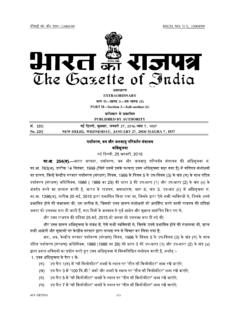

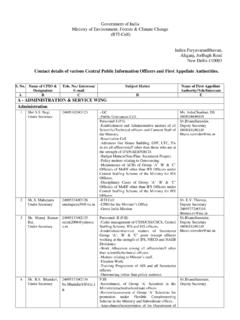

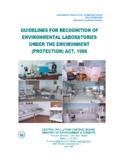
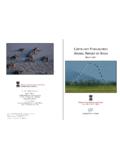
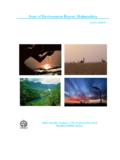
![Untitled-1 [www.moef.nic.in]](/cache/preview/0/7/5/4/5/e/c/5/thumb-07545ec5a24fcdf0c4f7836434cadcc8.jpg)
